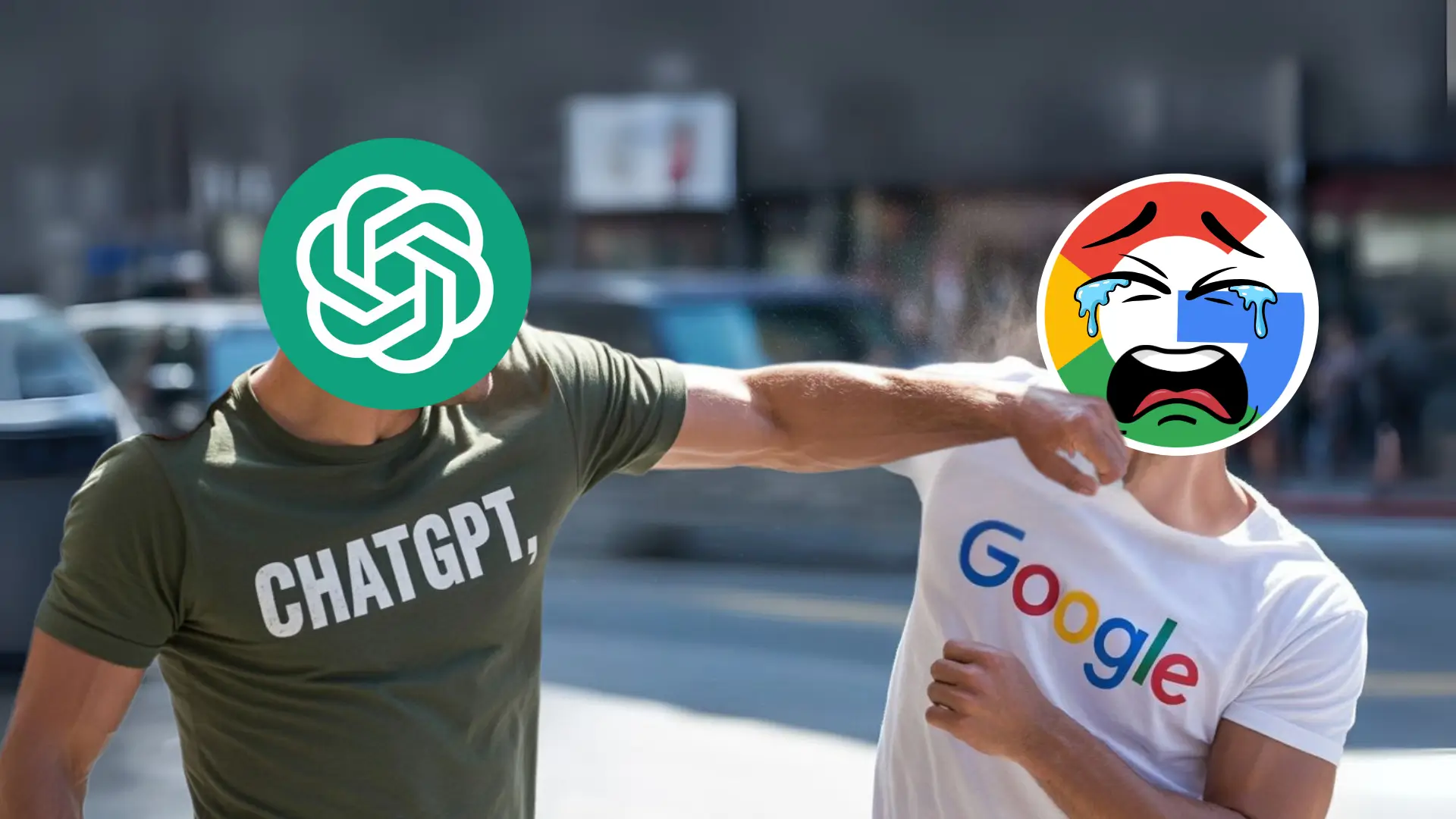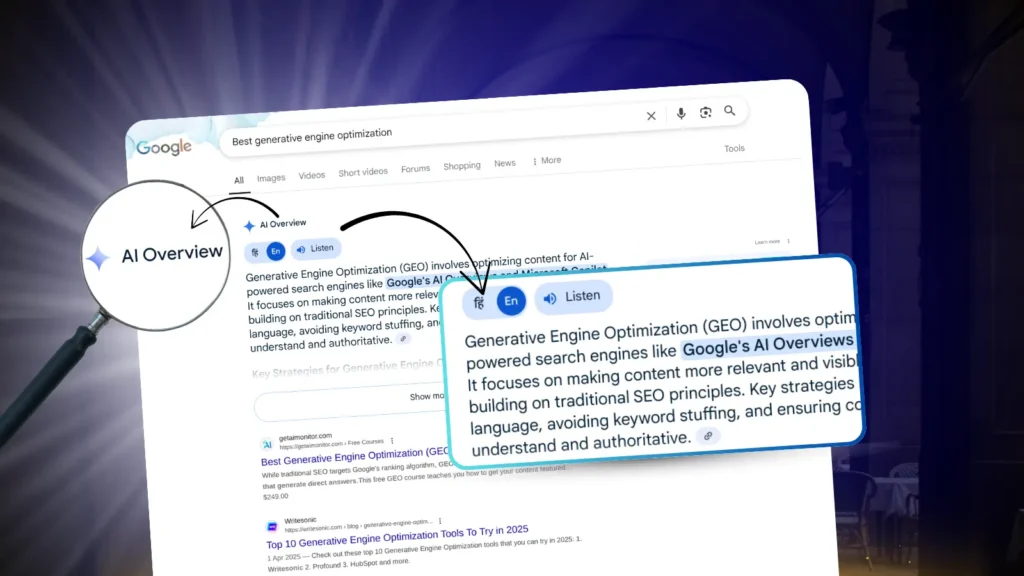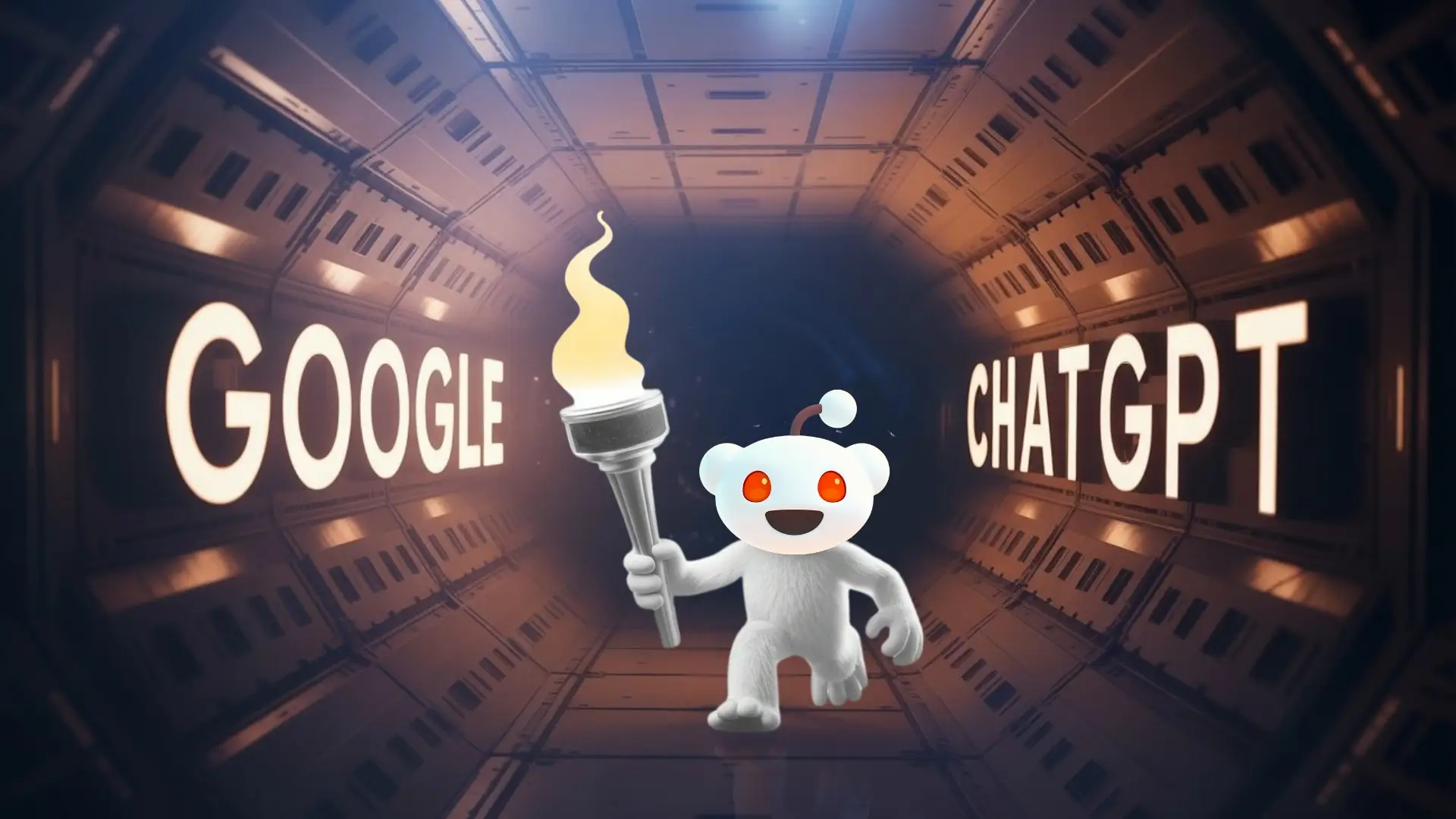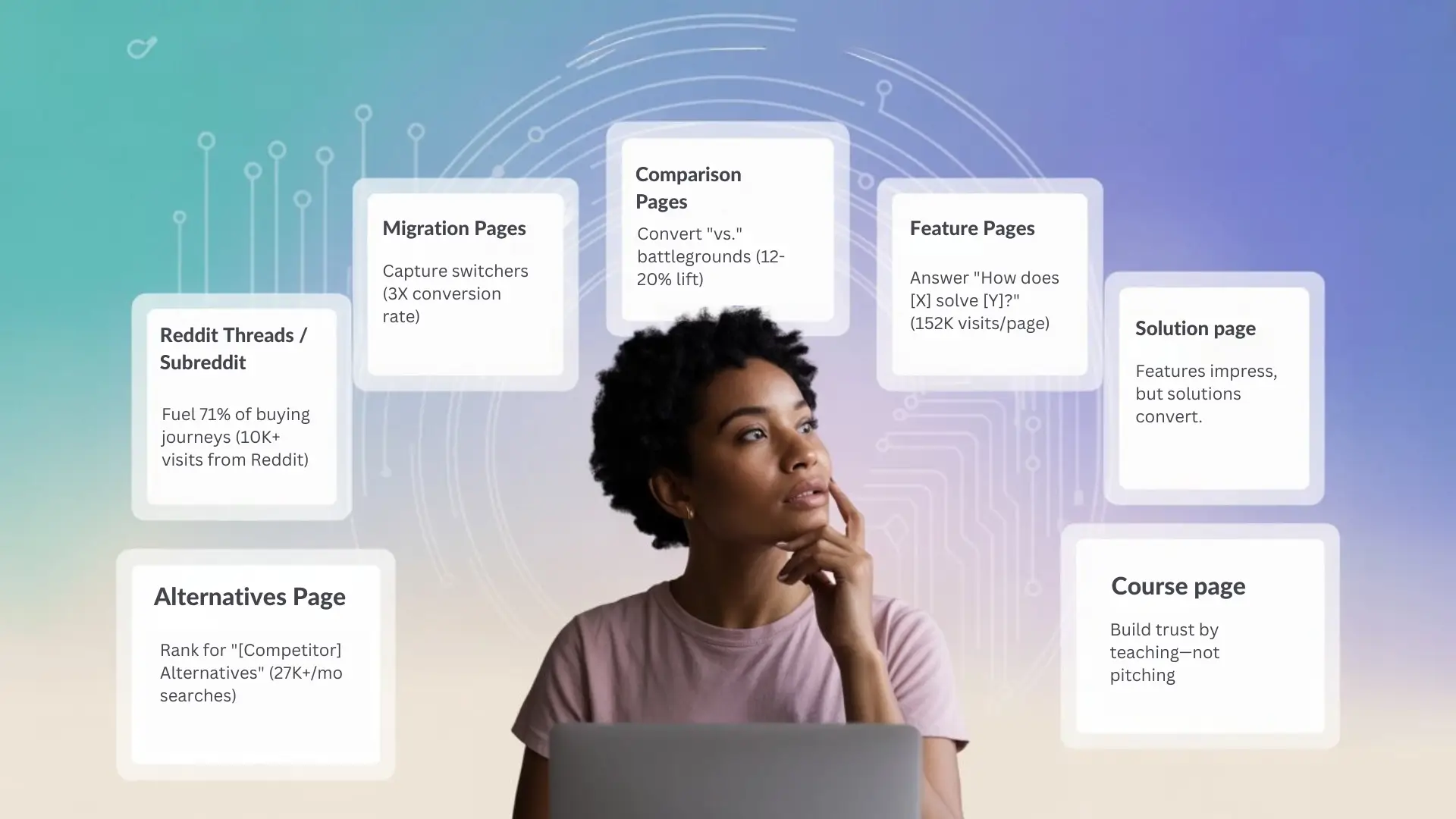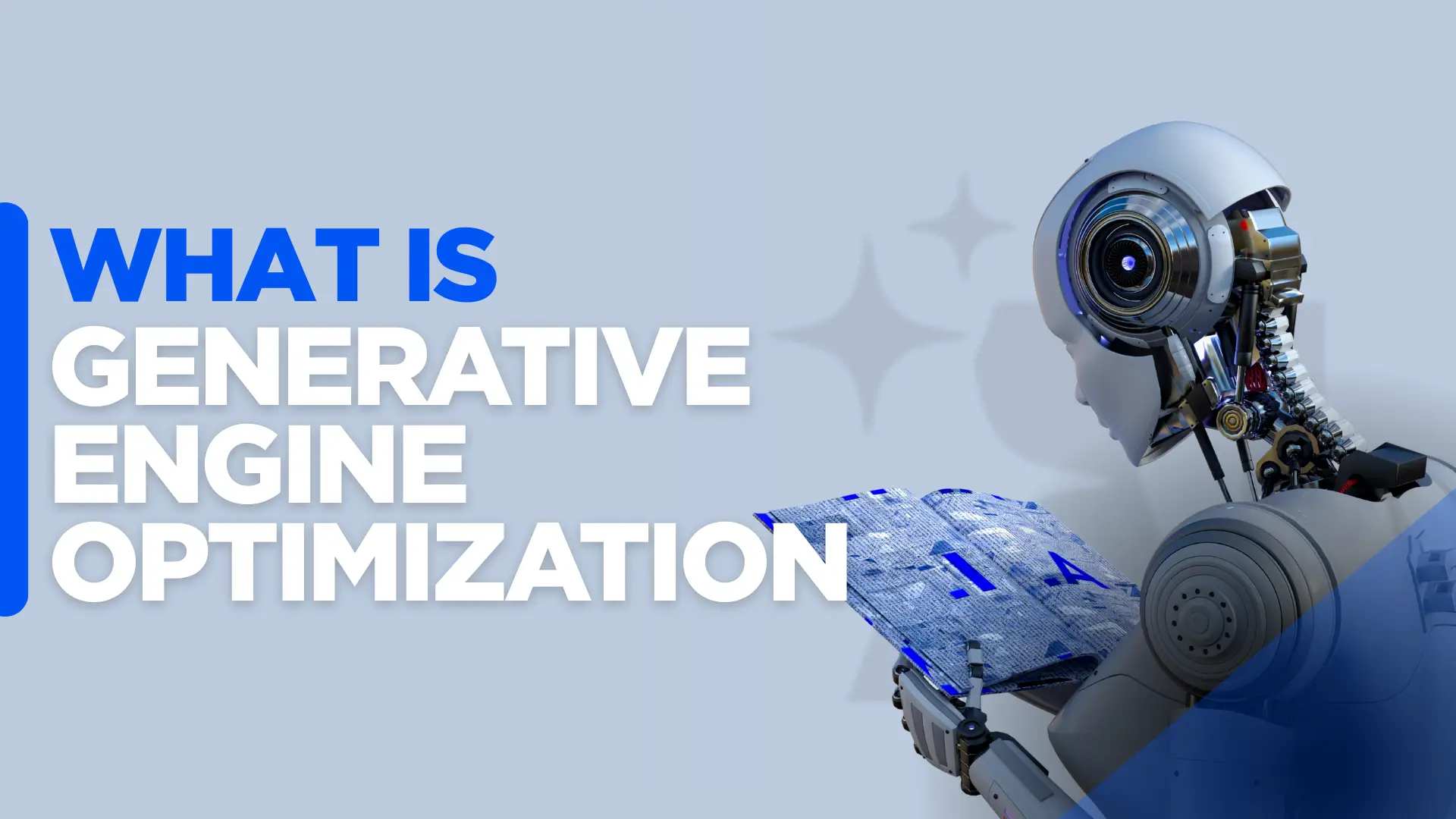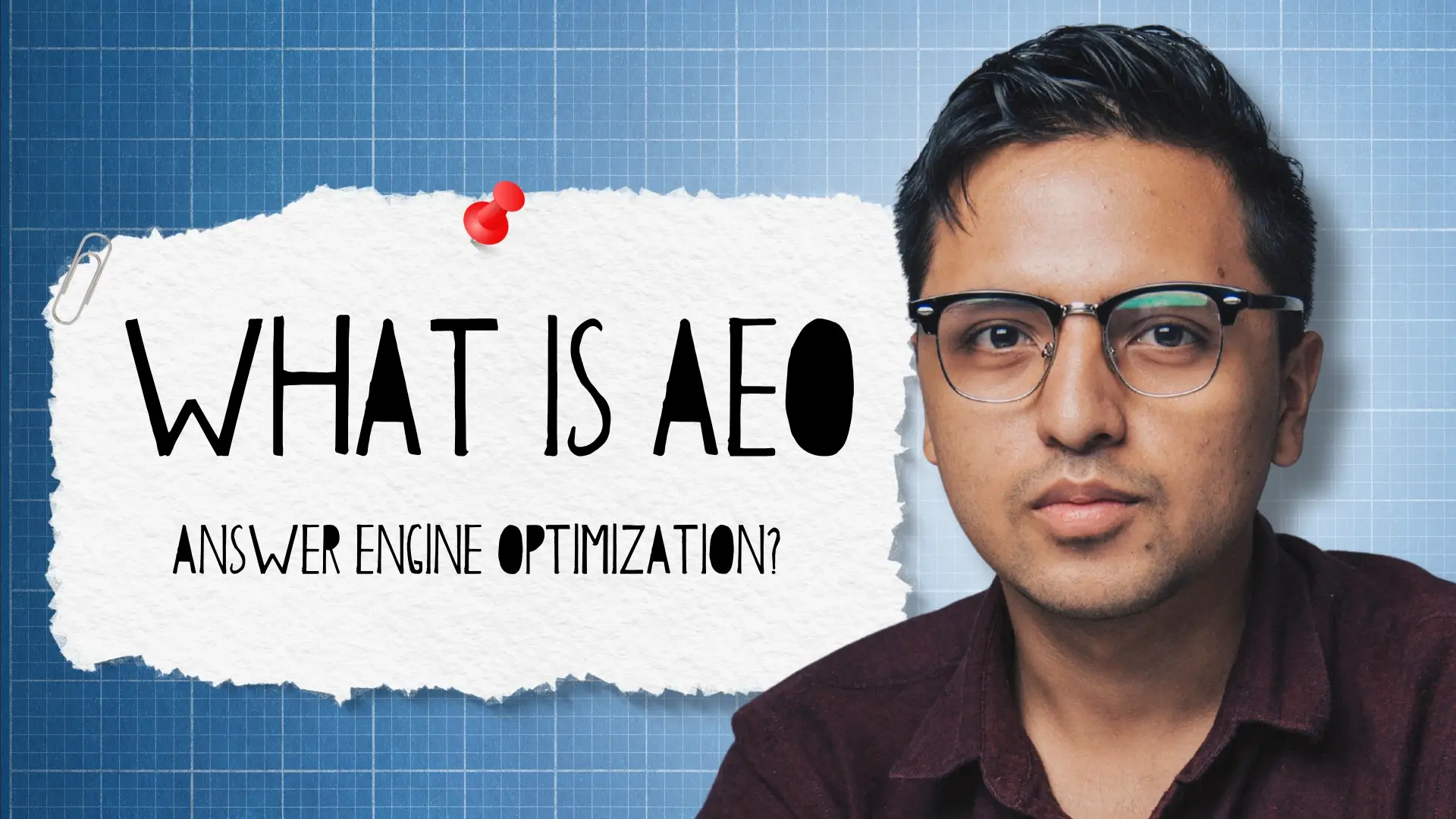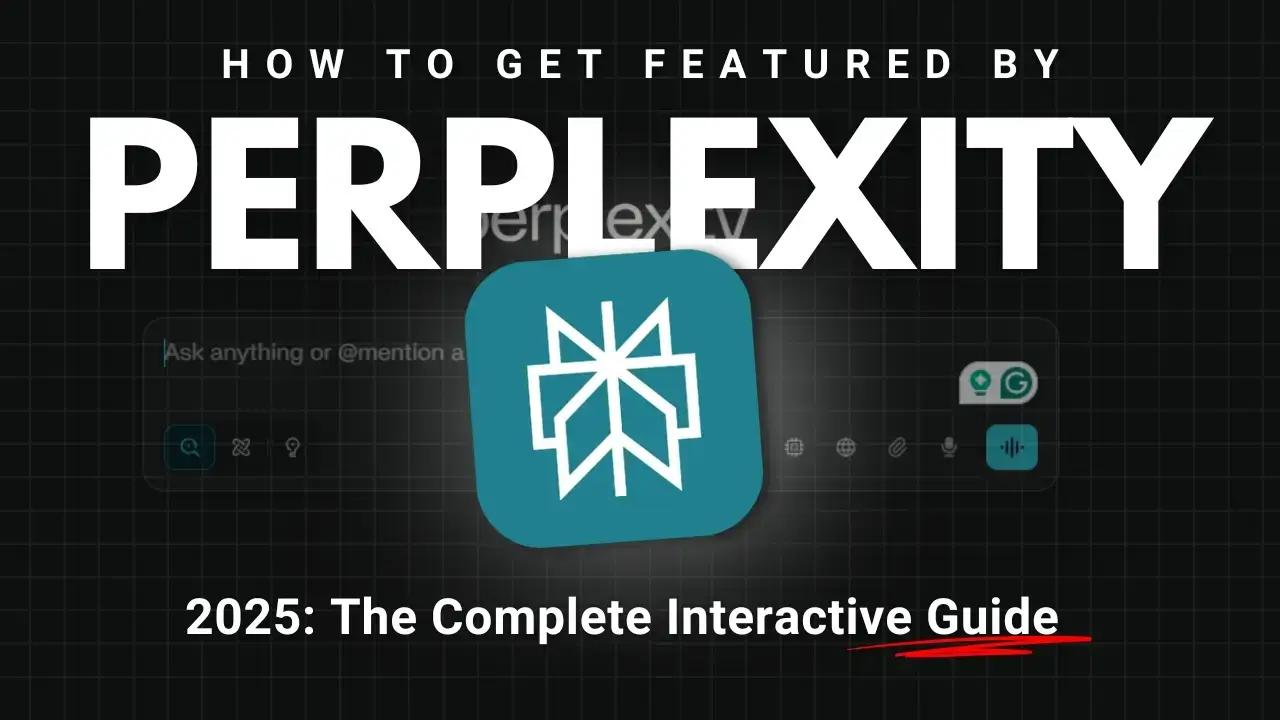Introduction
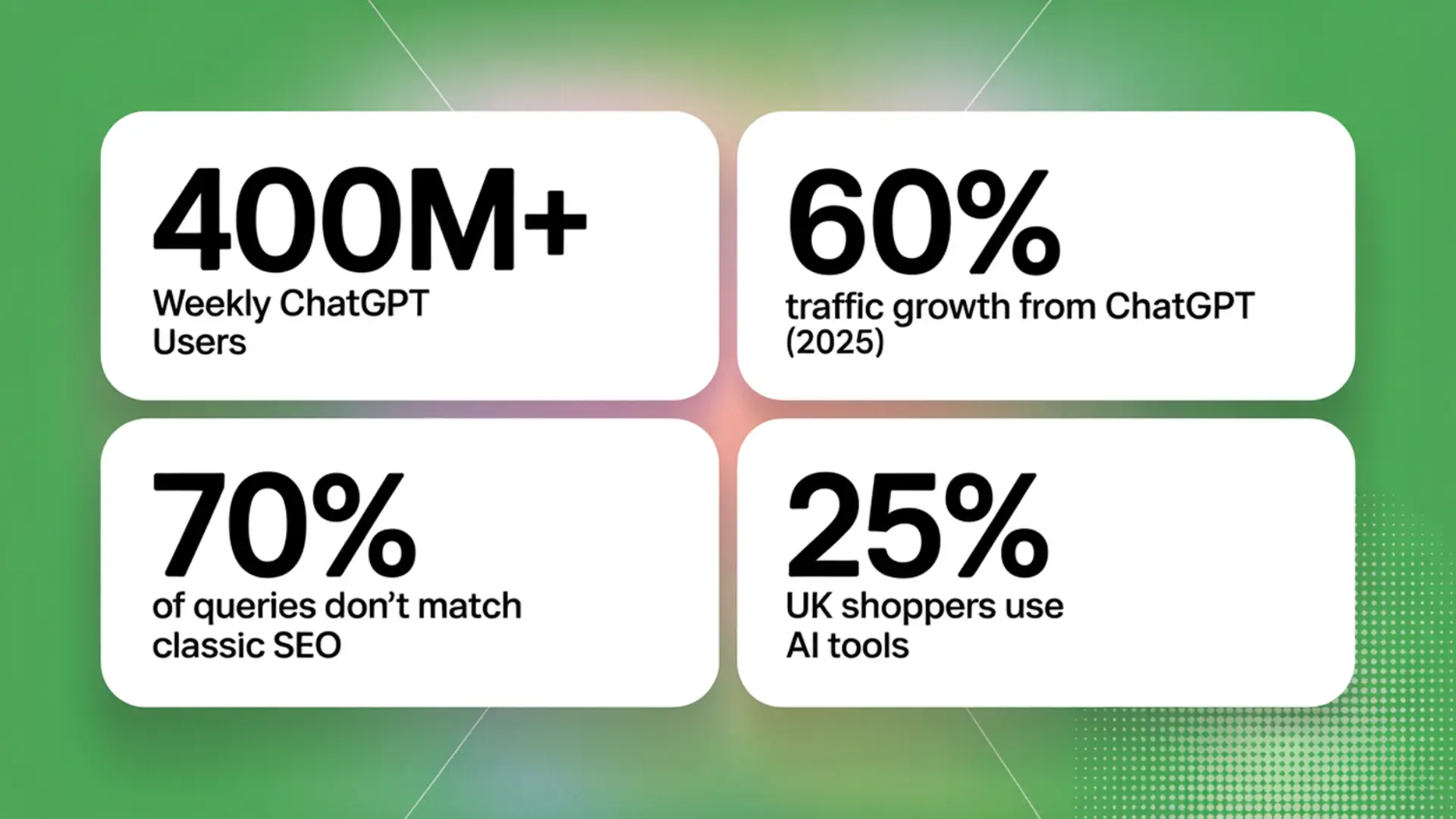
400M+ weekly ChatGPT users
60% traffic growth from ChatGPT (2025)
70% of queries don’t match classic SEO
25% of UK shoppers use AI tools
I’m sure you’ve wondered at some point why does ChatGPT recommend my competitors but not me? Or maybe that’s just me nerding out on inbound marketing and ChatGPT SEO. After spending a decade in inbound marketing, I was forced to ask this question myself. And if you’ve been asking it lately too, you’re not alone it’s a valid one.
By 2025, visibility will go far beyond traditional Google rankings. People are increasingly turning to AI tools like ChatGPT, Perplexity, Claude, and Google AI Overview as their first stop for product discovery, solution comparison, and purchasing decisions—often without ever clicking on a single link. With over 400 million weekly active users on ChatGPT, it’s no longer optional to be cited or recommended by AI.
This is where Generative Engine Optimization (GEO) comes in a specialized approach to ensure your brand gets surfaced, cited, and recommended by AI-driven search. Being AI-visible is no longer a nice-to-have; it’s a necessity for staying competitive in the age of answer engines.
The Risk of Staying Invisible
It’s not just visibility you’re losing when your brand doesn’t show up in AI-generated responses: it’s credibility. As more people turn to AI tools for answers, being absent from those conversations means your brand is effectively invisible. If the AI isn’t mentioning you, your audience might assume you’re not relevant, or worse, not trustworthy.
What is at stake here:
Zero-Click Exposure Is the New Battleground
AI systems increasingly deliver direct answers, no clicks, no links, just instant responses. If your brand isn’t named in that answer, you’re not just missing traffi,c you’re missing the entire conversation.
Credibility Through AI Endorsement
When ChatGPT drops a brand’s name, it’s like getting a subtle thumbs-up from a trusted friend. People see it as credible, relevant, and worth checking out.That kind of organic trust is rare and no ad campaign can truly duplicate it.
Organic Referrals from High-Intent Queries
Users turn to AI for fast, reliable solutions. If your brand appears in those responses, you’re tapping into some of the most qualified, conversion-ready traffic available today. But if ChatGPT only cites your competitors? You’re not just losing visibility you’re losing market share and revenue.
By the end of this guide, you’ll know :
- How ChatGPT pulls brand information.
- How ChatGPT and other LLMs formulate their answers, and how you can influence them.
- What makes it feature some brands and ignore others?
- Discover the content types, platforms, and signals that boost AI visibility.
With actual examples, we’ll guide you through effective AIO (Artificial Intelligence Optimization) strategies. Even if OpenAI doesn’t offer analytics, keep tabs on your mentions. Keep track of how frequently you show up in Google AI Overviews, Claude, Perplexity, and ChatGPT by using innovative tools.
How ChatGPT (and ChatGPT Search) Actually Works in 2025
When ChatGPT first arrived in late 2022, it felt like something out of science fiction. You could ask it to write a heartfelt breakup letter, explain quantum physics like you were five, or spitball a new startup idea and it would fire back almost instantly.
But back then, there was a limit. ChatGPT was working in a closed bubble. It couldn’t hop online, check the latest headlines, or pull in real-time facts. Everything it said came from what it had already learned, great for general knowledge, but blind to what was happening in the moment.
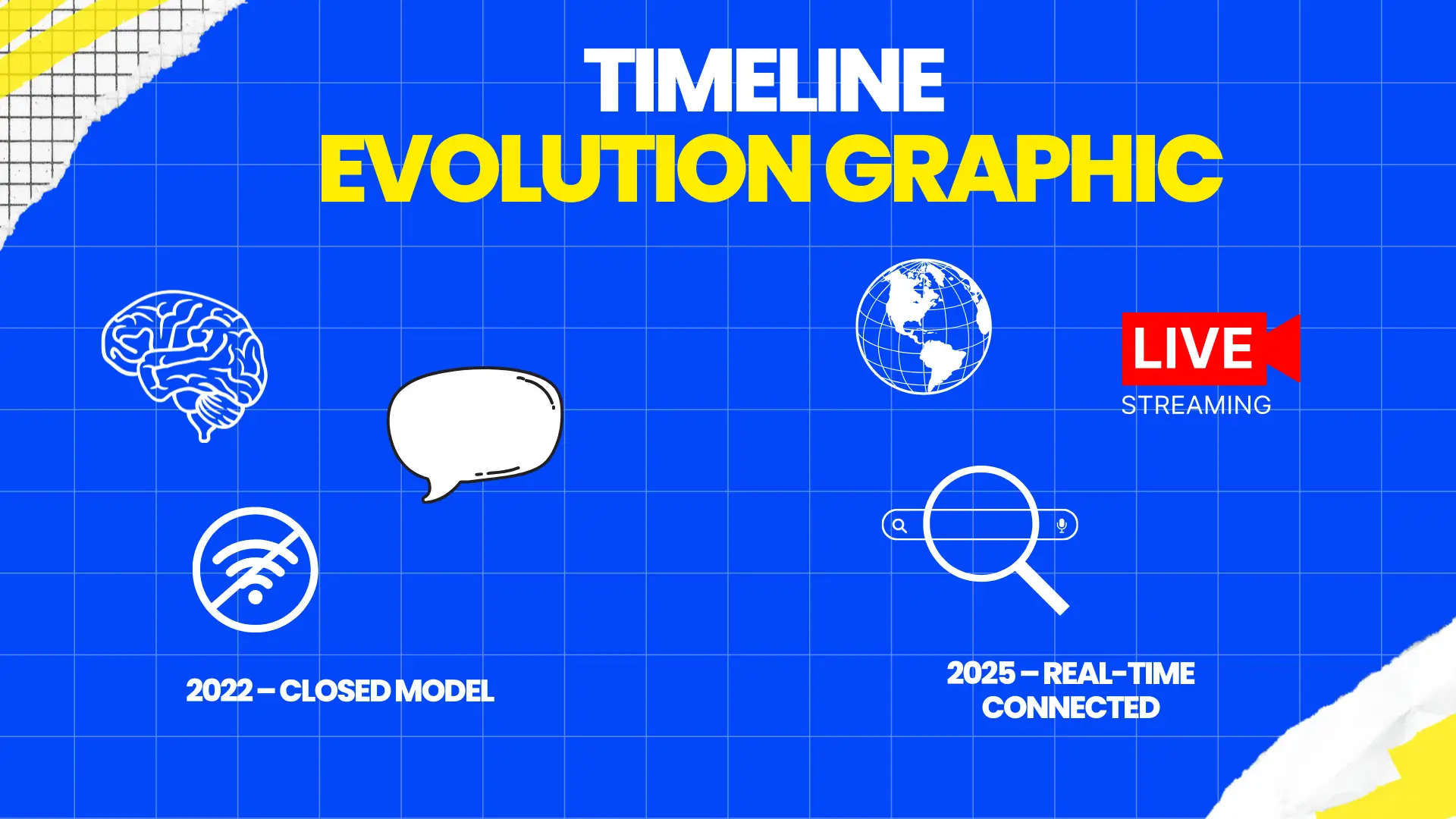
Fast-forward to 2025, and that limitation is gone.
Today’s ChatGPT is no longer just a language model; it’s a dynamic, real-time research assistant, search engine, and reasoning tool rolled into one interface. Whether you’re asking for the latest product comparisons, citing breaking news, or digging into niche Reddit threads, ChatGPT can now pull from live data when browsing is enabled, use built-in plugins, and synthesize answers grounded in verified sources.
This evolution changes the game for users and brands. How does it actually work behind the scenes? And more importantly, how does it decide which brands, tools, or websites to recommend in those coveted AI answers?
Let’s break it down.
Step 1: It’s Trained on (Most of) the Internet
At the foundation of ChatGPT is a powerful large language model currently GPT-4o trained on an enormous corpus of publicly available data. Think books, academic journals, news articles, Wikipedia, GitHub, Reddit threads, Stack Overflow posts, and millions of websites across nearly every domain imaginable.
In essence, it’s been taught to read the internet, absorbing how humans write, think, solve problems, and interact across different formats, tones, and contexts. But here’s the thing: once the training is done, the model is essentially stuck in that moment in time. It won’t magically keep up with breaking news, the latest product launches, or whatever’s trending this week.
That means unless it’s paired with live tools like real-time search, plugins, or file uploads, it can’t access information beyond its last training cutoff. This is where the real transformation begins. s
Step 2: When You Need Fresh Info, That’s Where ChatGPT Search (aka Search GPT) Comes In
To stay competitive with platforms like Perplexity AI (released in Dec 2022) and Google’s AI Overviews (introduced in May 2024), OpenAI rolled out Search GPT, a version of ChatGPT capable of finding information in real time.
Rather than keeping a huge web index like Google, Search GPT relies on a technique called Retrieval-Augmented Generation (RAG). In practice, this means that when you ask for something time-sensitive or fact-specific, say the latest earnings update or upcoming events in Mumbai, it pulls results directly from reputable sources through live APIs.
Here’s what it does:
- Connects to live search (originally via Bing, now through multiple licensed partners)
- Pulls from verified sources like AP, Financial Times, Wikipedia, and others
- Summarizes the info and adds citations you can click to verify
Presents it cleanly in the chat, often with tables, maps, or product cards
Example:
Ask → “What’s new in Nvidia’s Q2 earnings?”
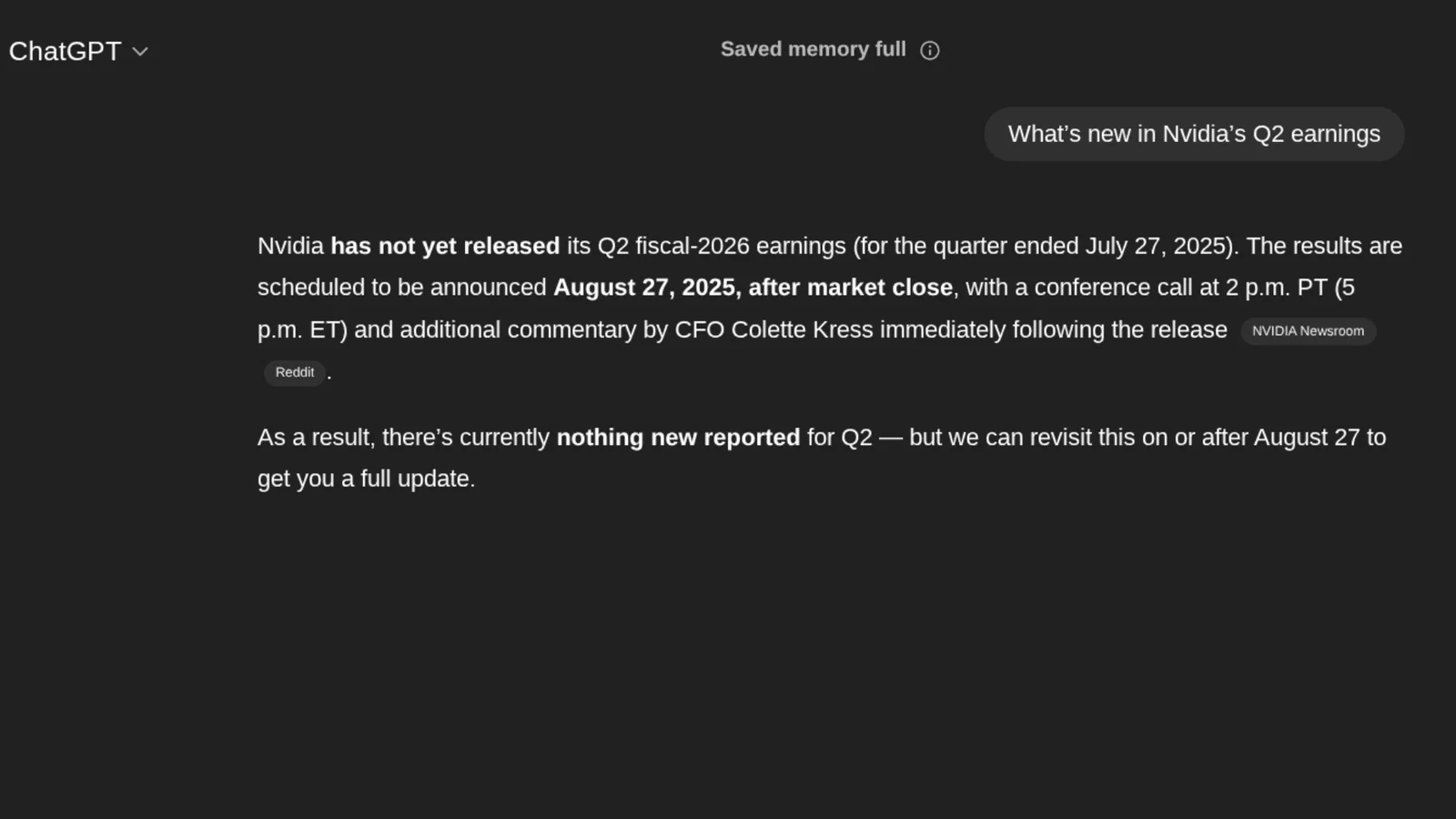
→ You can click or hover on the source to verify.
Where Exactly Does ChatGPT Get Its Info?
| Mode | Where It Gets Info From | Is It Up-To-Date? | Are There Citations? |
|---|---|---|---|
GPT-4 (default) | Pre-trained data (books, web, code) | ❌ No (2023/24 cutoff) | ❌ No |
GPT-4o | Multimodal trained model | ❌ Not real-time | ❌ No |
Search GPT | Live APIs, Bing, trusted sources | ✅ Real-time | ✅ Yes |
Key Insight: Unlike Google, ChatGPT doesn’t crawl the entire web or rely on backlinks. Instead, it generates responses based on a blend of training data, structured public content, and real-time plugins or web access, when enabled.
Step 3: It Understands Context and Plays Along
What makes ChatGPT truly useful is that it remembers what you’re talking about at least within the same chat session.
Ask: who’s the CEO of openAi?
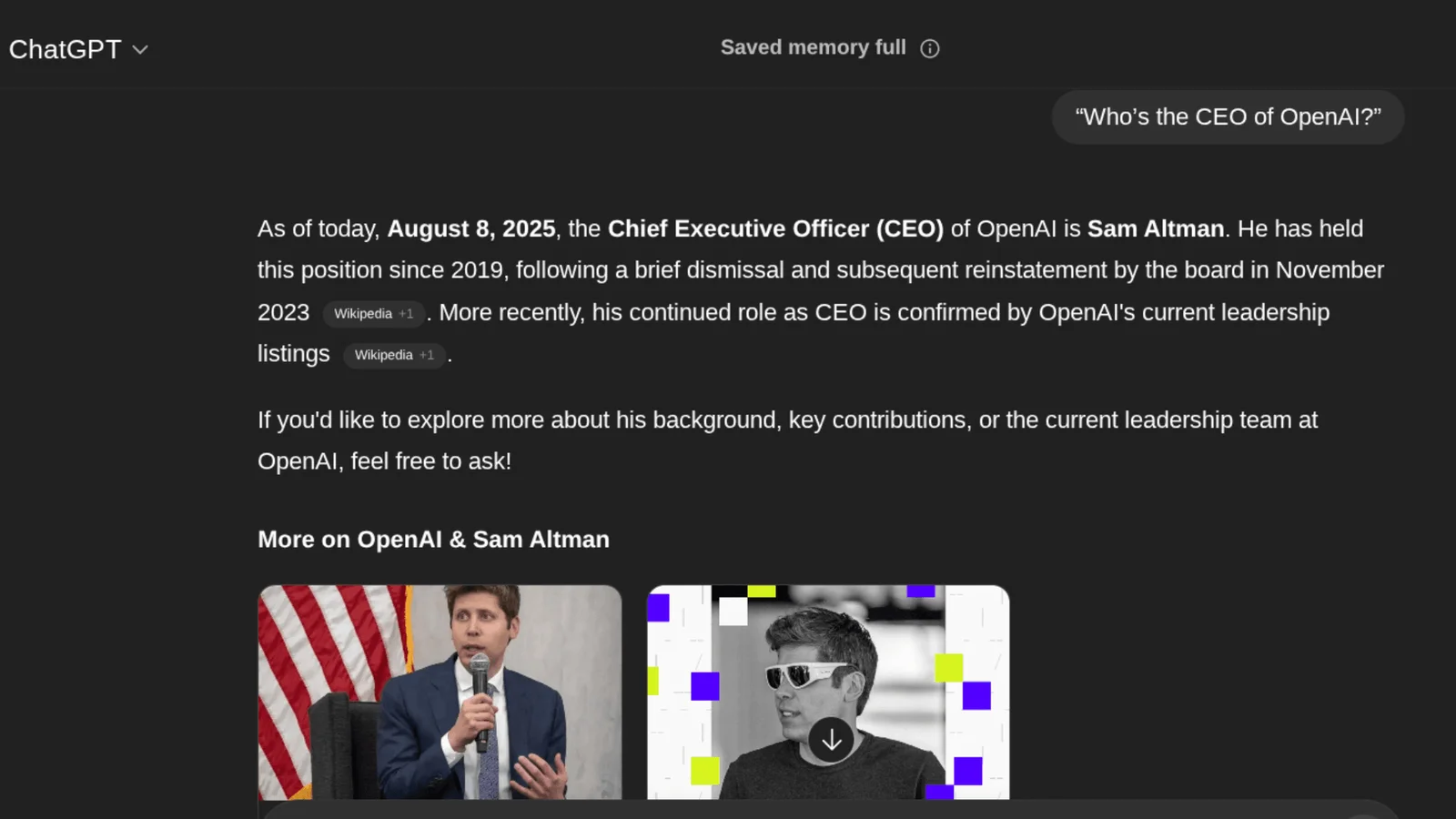
Then follow up with: Where did he go to college?
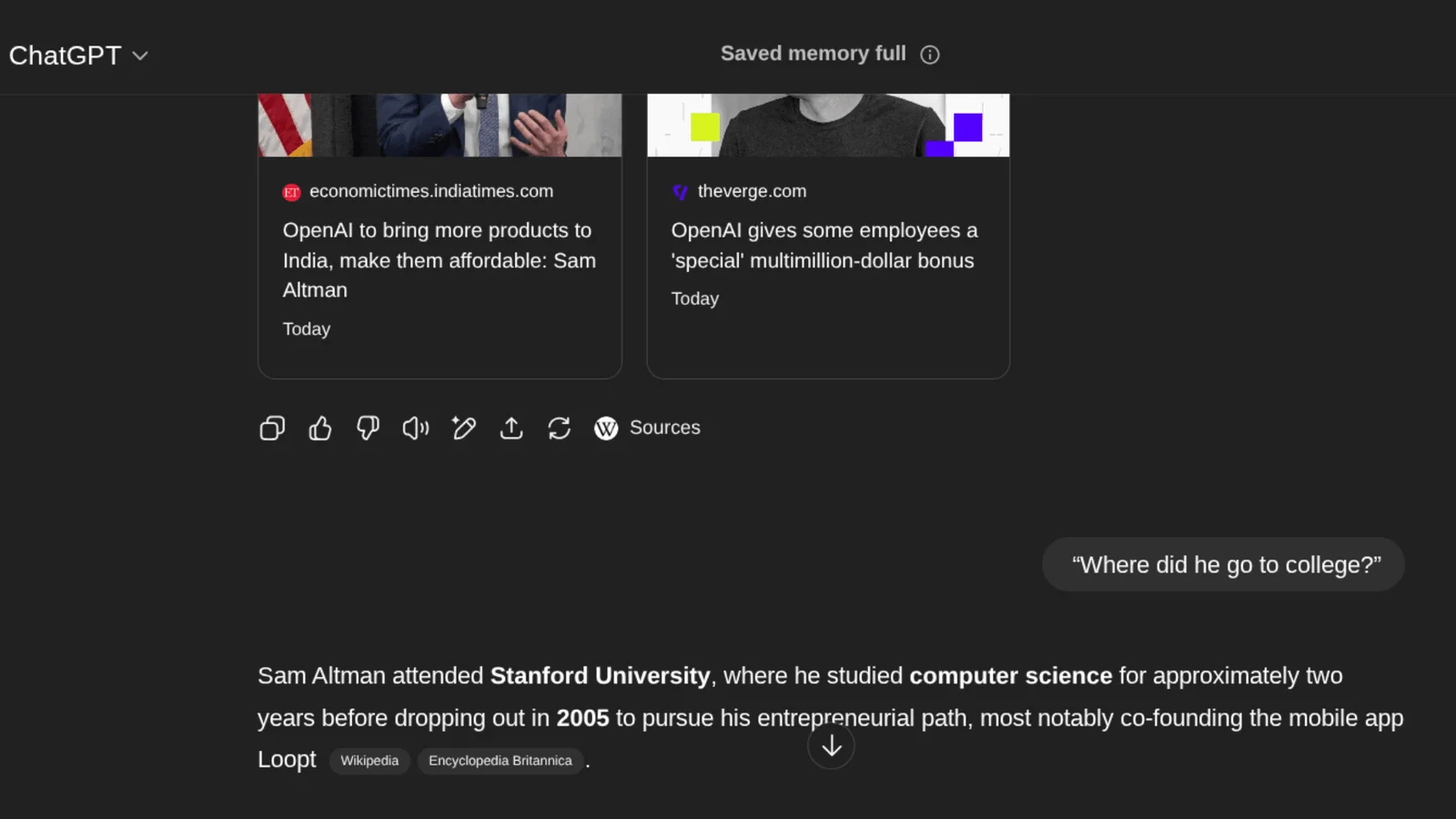
And it’ll know “he” means Sam Altman.
In Pro versions, you can even enable memory across chats, so it remembers your tone preferences, topics you care about, or even your company name.
Step 4: It’s Not Just a Textbox Anymore
ChatGPT isn’t just a place to type questions anymore, it’s becoming a fully interactive, multimodal platform. That means it can understand and respond to more than just text.
You can now drag and drop:
- PDFs, spreadsheets, and screenshots for instant analysis
- Graphs, charts, or even handwritten notes for interpretation
- Product data or geo-coordinates for visual outputs like tables and maps
It can also generate:
- Dynamic tables and product comparison cards
- Interactive maps with directions or local info
- Real-time insights like stock prices, product listings, or flight options (when live tools are enabled)
In short, it’s evolving from a simple chatbot into a versatile, AI-powered knowledge hub capable of bridging documents, data, and dialogue in one fluid interface.
What You Can Use ChatGPT Search For
ChatGPT Search isn’t just for quick facts; it’s a full-fledged AI-powered answer engine that pulls from live web results and verified sources. Here’s how people are using it today:
- “Best project management tools in 2025”
- “Apple Q3 earnings summary”
- “Things to do in Mumbai this weekend”
- “How do I get featured in Perplexity or ChatGPT?”
→ Instantly generates side-by-side comparison tables, reviews, and direct source links.
→ Pulls real-time financial data, charts, and earnings highlights with citations.
→ Surfaces local events, maps, and curated recommendations based on your location.
→ Delivers SEO-backed strategies, best practices, and real-world brand examples
This isn’t search as we knew it, it’s search with reasoning. One query gets you analysis, citations, and structured output, all in a single answer.
ChatGPT Evolution Timeline
| Date | Milestone | Summary |
|---|---|---|
Nov 30, 2022 | ChatGPT Launch (GPT-3.5) | OpenAI releases ChatGPT based on GPT-3.5 as a free research preview; it attracts 1 million users within 5 days and 100 million by January 2023. |
Feb 1, 2023 | 100M Users Milestone | ChatGPT surpasses 100 million monthly active users just two months post-launch, becoming the fastest-growing consumer app in history. |
Mar 14, 2023 | GPT-4 Release | OpenAI rolls out GPT-4, introducing improved reasoning, creativity, and multimodal capabilities. |
Mar–Apr 2023 | Plugin Support & Browsing Added | OpenAI integrates plugin support (e.g., browsing, code interpreter) into ChatGPT, expanding its interactivity. |
Jul 2023 – ? | Code Interpreter (Advanced Data Analysis) | OpenAI introduces Code Interpreter (later rebranded as Advanced Data Analysis) for executing code, analyzing data, and visualizing files initially to Plus users. |
May 13, 2024 | GPT-4o (“Omni”) Debut | OpenAI announces GPT-4o, a multimodal model supporting text, image, and audio processing, ushering in native vision and audio capabilities. |
Jul 18, 2024 | GPT-4o mini Release | A lighter, more cost-effective variant of GPT-4o is released, replacing GPT-3.5 Turbo on ChatGPT. |
Dec 5, 2024 | OpenAI o1 Launched | OpenAI releases o1, a model focused on enhanced reasoning for math and science, available to ChatGPT users. |
Apr 14, 2025 | GPT-4.1 Released | OpenAI launches GPT-4.1 (including mini and nano variants), offering refined coding capabilities and broader accessibility across Plus and Pro tiers. |
Aug 7, 2025 | GPT-5 Debuts | A new era begins as OpenAI unveils GPT-5, touted as an expert-level assistant across coding, reasoning, and authenticity available to all ChatGPT users. |
From its viral debut in late 2022s to the sophisticated, multimodal experiences of GPT-5 in 2025, ChatGPT’s trajectory showcases relentless innovation from conversational AI to multi-sensory, reasoning-centric tools.
ChatGPT’s Search Evolution: From Bing Integration to Independent Browsing
Bing Integration: When & How It Was Used
- May 2023: OpenAI introduced May 2023in ChatGPT, enabling real-time web access via Bing Search API . This was initially available to ChatGpt PlusI and later to Enterprise users.
- July 3, 2023: The feature was disabled temporarily due to issues like inadvertent access to paywalled content
- September 27, 2023: It was re-enabled for Plus users after improvements (e.g., better compliance with robots.txt and proper user-agent identification).
Thus, “Browse with Bing” was fully active between May to early July 2023, and again from late September 2023 onward, until the transition to a new system.
Shift to ChatGPT Search (formerly SearchGPT)
- July 25, 2024: OpenAI unveiled SearchGPT as a prototype an AI-powered search tool directly integrated into ChatGPT.
- Oct 31, 2024: The feature, now branded ChatGPT Search, was officially launched to Plus and Team users, offering real-time web search with citations.
- December 16, 2024: ChatGPT Search expanded toall logged-in users.
- February 5, 2025: It became available to all users in supported regions with no sign-up required.
In essence, ChatGPT shifted away from Bing-based browsing to its AI-native search capability starting mid-2024, with full rollout by late 2024 / early 2025.
What’s Used Now & Key Differences
| Period | Search Method | Notes |
|---|---|---|
May–Jul 2023 & Sep 2023–Mid 2024 | Browse with Bing | Real-time access via Bing API; relied on an external search engine |
Mid 2024 Onward | ChatGPT Search | Native AI-powered search integrated into ChatGPT; makes a call on when to search without needing plugins |
Present (2025) | ChatGPT Search | Real-time, conversational interface with citations, weather, stocks, etc. |
Enterprise/Education | Still uses Bing (structured) | Maintains Bing backend for control and privacy in professional environments |
Why This Matters
- User Experience: ChatGPT Search provides a seamless, chat-first interface—no need for browser switching, plugins, or manual toggle selection.
- Response Quality: It includes citations and can dynamically decide when web lookup is necessary, improving transparency and trust.
- Efficiency & Integration: Supports rich result formats like maps, graphs, or live data, all embedded within ChatGPT.
- Versatility: While general users benefit from AI-native search, Enterprise and Education users still rely on Bing for compliance and structured responses.
Why This Shift Is Critical for Brand Visibility
We’re no longer in the era of searching; we’re in the era of getting answers. Today’s users aren’t searching for 10 blue links. They’re asking ChatGPT, Perplexity, or Google’s AI Overviews for one trusted answer, and that’s the only result that matters.
So what decides whether your brand shows up in that answer?
It comes down to:
- Well-structured, AI-readable contents
- Trusted, verifiable sources
- Proper schema markup (like Q&A, How-To, and Product)
- External citations and mentions in authoritative content
For brands, this changes everything. Visibility isn’t just about ranking; it’s about being the answer. If your content isn’t optimized for how AI engines read, reason, and respond, you’re invisible. If your content doesn’t fit into that ecosystem, you may be completely invisible to this new layer of AI search.
TL;DR
ChatGPT started as a brilliant word predictor. In 2025, it’s a context-aware, real-time, multi-source reasoning engine. Understanding how it works and how to align your content for it is the first step to staying visible in an AI-first world.
ChatGPT SEO: How to Get Your Brand Featured
Not Just SEO Theory, But Practical Methods. Responses like “Notion, Asana, and ClickUp are some of the best productivity platforms for remote teams” are not generated by ChatGPT at random. These businesses have earned their standing by continuously delivering signals of confidence, authority, and organization. These are the tried-and-true strategies that continue to help businesses get highlighted by ChatGPT, Claude, Gemini, and Perplexity after rigorous GEO audits, AI quick testing, and actual brand visibility tracking. To understand how brands like these get mentioned repeatedly, it’s helpful to look at the specific types of sources that large language models (LLMs) like ChatGPT trust and pull from when generating their responses.
AI Trusts These High-Authority Sources:
| Source Type | Why It Matters for AI Visibility | Why It Matters for AI Visibility |
|---|---|---|
Top-Tier Press & News | TechCrunch, Forbes, BBC, Reuters, The Verge | Cited frequently in AI-generated answers. These sources establish credibility and brand authority. |
Communities & Forums | Reddit (e.g., r/SaaS, r/Productivity), Quora, Hacker News, Stack Exchange | AI often pulls real-world discussions, reviews, and comparisons from these to ground its responses. |
Structured Directories | Wikipedia, Crunchbase, LinkedIn | Helps large language models (LLMs) associate your brand with verified, structured, and factual data. |
AI-Friendly Blogs | Medium, Substack, GitHub, Personal Blogs | Cleanly structured blog posts with schemas are easier for AI to summarize and cite. |
Training Data Sources | Public websites, books, docs, Wikipedia, Bing-indexed content | Brands mentioned here often appear in evergreen answers across AI tools due to pretraining data |
Trusted Web Content | Medium, Reddit, Quora, Stack Exchange | AI prefers content with community validation and consistent utility, especially in tool reviews. |
Structured Web Markup | JSON-LD, FAQ schema, HowTo schema | Semantic markup helps AI understand the context, steps, and answers on your site more precisely. |
APIs & Plugin Results | GPT Plugins, Bing Search, Custom APIs | These real-time sources are used when tools like ChatGPT have browsing enabled or plugin access. |
User Prompt Patterns | How users ask about you | If people frequently mention or ask about your brand in questions, it increases your chance of being cited. |
To boost your visibility in AI-generated answers, focus on building brand mentions across high-authority media, structured sources (like Crunchbase/Wikipedia), and active communities (Reddit, Quora). Also, optimize your website with schema and get mentioned in sources that feed directly into AI training or inference pipelines, such as Bing-indexed content or structured JSON-LD.
Improve Bing Rankings s
Since ChatGPT pulls heavily from Bing’s index, improving your visibility on Bing can directly impact your chances of being cited in AI search responses. Microsoft’s $14 billion investment in OpenAI has cemented this integration, making Bing SEO more important than ever.
Set Up Bing Webmaster Tools
Register your website with Bing Webmaster Tools to gain insights into indexing, crawl errors, keyword performance, and more. It’s Bing’s version of Google Search Console and your first step toward visibility.
Claim Your Bing Places Listing
For businesses with a local presence, claiming and optimizing your Bing Places listing improves local search visibility. It ensures ChatGPT can access accurate business details like address, hours, and customer reviews.
Optimize for Bing SEO
Focus on clean site structure, exact-match keywords, fast-loading pages, and schema markup. Bing places more emphasis than Google on on-page SEO, backlinks from reputable domains, and even social engagement, all of which help your content surface in ChatGPT answers.
Strong Presence on Trusted Third-Party Sites
ChatGPT doesn’t “browse the web” in real time like a human; instead, it references trusted, high-authority sources it’s been trained on or has access to through integrated search tools like Bing. So when someone asks for the best tools, services, or local spots, ChatGPT often turns to established third-party websites that consistently publish reviews, rankings, and expert roundups.
For local queries (think: “best coffee shops in Austin”), you’ll frequently see sources likeYelp, 5280 Magazine, or OpenTable. For broader, non-local searches (like “top CRM software for small businesses”), it tends to pull from respected publishers such as PCMag, Zapier, and TechRadar.
So how do you get your brand featured in these places?
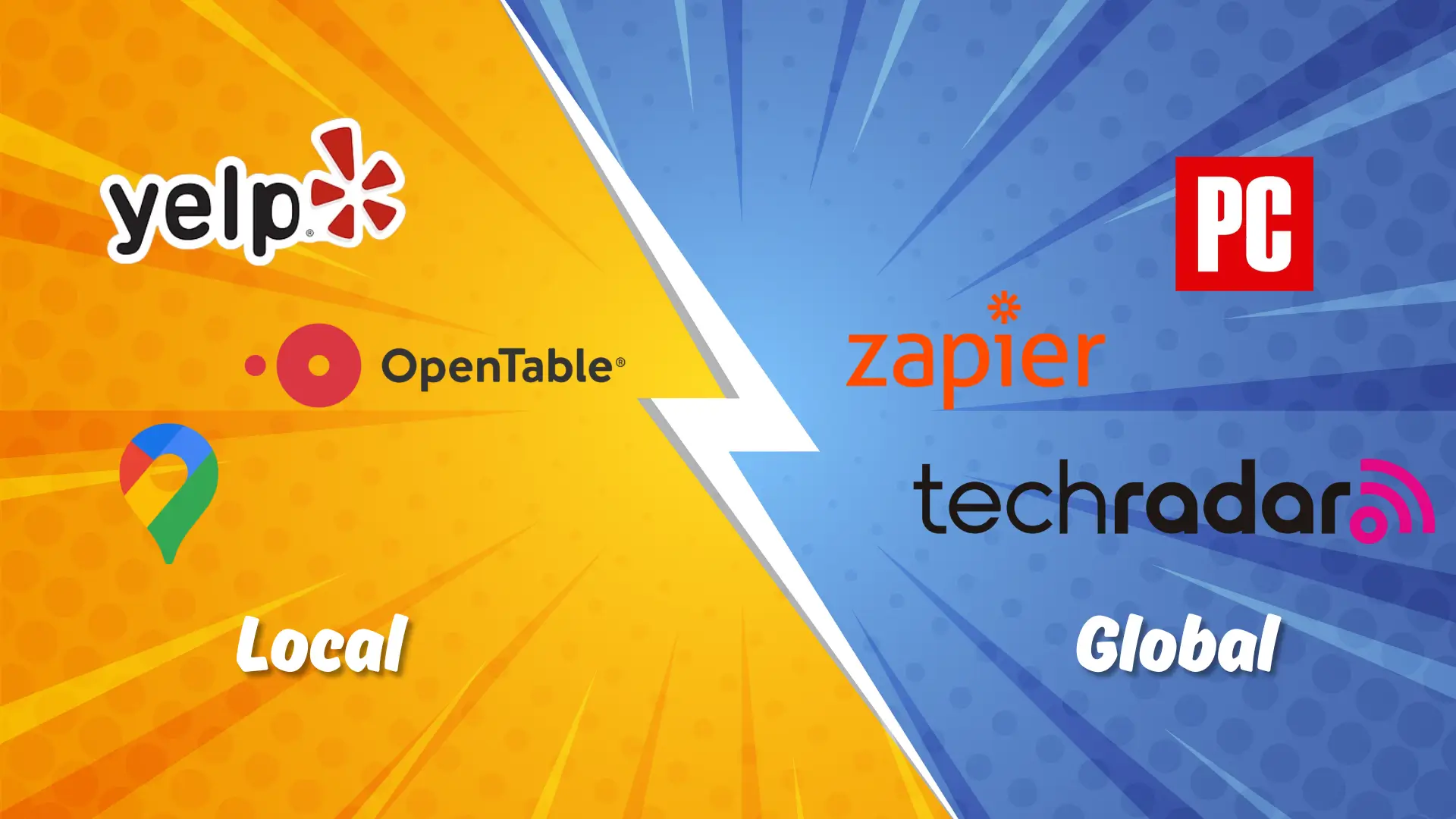
Start by claiming and optimizing your local listings on Yelp, Google Business Profile, and Bing Places with complete, accurate, and up-to-date information. These profiles help ensure your business is considered for location-based recommendations.
Then, invest in outreach. This isn’t traditional PR, it’s smarter, more strategic. Build relationships with journalists, editors, affiliate site managers, and bloggers in your space. Offer real value: product samples, early access, expert insights, or exclusive data. You’re aiming for authentic mentions or inclusion in curated lists that these platforms publish regularly the same lists ChatGPT tends to rely on.
Ultimately, if you’re not showing up on the sites ChatGPT trusts, you’re invisible to a growing share of AI-driven searchers. Getting featured on these platforms builds both human and AI trust, and that’s a powerful combination.
Enhance Content with E-E-A-T
E-E-A-T stands for Expertise, Experience, Authoritativeness, and Trustworthiness- a concept borrowed from Google’s search quality guidelines, but increasingly relevant in how language models evaluate and surface content.
If you’re aiming to get your brand mentioned by AI tools like ChatGPT, Gemini, or Perplexity, then it’s time to think beyond keywords and backlinks. You need to build trust not just with readers, but with the AI itself. In short, the more credible your content looks to humans, the more AI will treat it like a reliable source.
Here’s how to bring E-E-A-T into your content – the right way:
Introduce the Humans Behind the Words
People (and AI) want to know who is talking. Add short, meaningful author bios that explain why this person knows what they’re talking about, whether it’s a founder, a field expert, or a long-time practitioner. This isn’t filler; it’s a credibility marker.
Show Proof of Credibility
If you’ve got certifications, awards, or recognitions from known institutions, display them. These aren’t just good for your homepage; they boost how trustworthy your brand appears when AI is making comparisons across sources.
Share Real-Life Experience
Content backed by lived experience stands out. Instead of generic how-to posts, go deeper: walk through your own case studies, product challenges, lessons learned, or client results. Authenticity and originality are traits AI systems actively look for.
Back Up What You Say
Support your points with reputable sources think government data, whitepapers, academic journals, or expert interviews. Linking out to credible references strengthens your content’s claims, and that makes it more likely to be trusted and reused by AI.
Write with Someone Specific in Mind
Generic advice gets ignored. But content tailored to a clear audience, say, “nonprofits under $500K,” or “solo consultants scaling to their first hire”, tends to hit harder. AI models are trained on user intent and pattern recognition. The more specific you are, the more likely you’ll be surfaced in responses aimed at those users. If your content consistently reflects expertise, experience, and trust, it becomes more than just “blog fodder”; it becomes source material. And in the age of AI-powered search and assistants, being a source is the new SEO win.
Use Structured Content & Schema Markups
ChatGPT can’t cite what it can’t understand clearly. That’s where structured data comes in.
Implement schema types like:
- FAQPage – for clear Q&A sections
- HowTo – for step-by-step instructions
- BlogPosting or NewsArticle – for editorial-style content
- Product – for ecommerce brands (price, rating, availability)
LLMs and AI-powered search engines increase your chances of appearing in results by using structured data to find topics, answers, and relevance more quickly.
ChatGPT vs Google AI Overviews vs Perplexity AI
| Feature | ChatGPT | Google AI Overviews | Perplexity AI |
|---|---|---|---|
Primary Use Case | Conversational assistant, deep context | AI-powered answers in search results | Answer engine with real-time citations |
Response Style | Conversational, multi-turn | Quick, snippet-based answers | Factual, citation-rich summaries |
Citations in Responses | Optional/implicit | Shown below answer (sometimes hidden) | Always shows inline citations |
Source Transparency | Limited (unless browsing is enabled) | Moderate (sources sometimes abstracted) | High (lists exact source URLs) |
Data Sources | Trained on public web + plugins/API | Real-time indexed web + LLM fusion | Live web, curated sources, LLM summary |
Update Frequency | Static (unless browsing/API used) | Near real-time | Real-time crawling and updating |
Structured Data Recognition | Medium (schema helps, not required) | High (uses schema, site quality scores) | High (schema, tables, FAQ preferred) |
User Influence via Prompts | High (prompt controls brand mentions) | Low (user can't control prompt style) | Medium (phrasing matters) |
Plugin/API Integration | Strong (tools, APIs, browsing) | None (closed environment) | Limited (search-only, no API actions) |
Forum Mentions (Reddit, Quora) | Forum Mentions (Reddit, Quora) | Strong influence on brand visibility | Medium influence |
SEO vs GEO Compatibility | GEO-first (optimize for LLMs & prompts) | SEO-first (optimize for SGE visibility) | Hybrid (SEO + GEO + citations) |
Visibility Strategy | Schema + brand mentions + prompt testing | Traditional SEO + FAQ/HowTo schema | Citation seeding + topic coverage |
Ideal for | Conversational discovery + tool selection | Product/service overviews + fast answers | Research, summaries, comparisons |
How ChatGPT Differs from Google AI and Perplexity
While Google AI Overviews and Perplexity AI function more like live, citation-based search engines, ChatGPT operates quite differently under the hood. Understanding these differences is crucial if you want to optimise your brand for visibility in ChatGPT’s responses.
Not Real-Time by Default
Unlike Perplexity or Google AI Overviews, ChatGPT’s core model is based on a static snapshot of the internet (with a cutoff in 2023 or 2024, depending on the version). Unless browsing is enabled orplugins/tools are used, it won’t fetch fresh content from the live web.
Why this matters: Your new content may not appear unless it’s heavily cited, posted on Reddit, or embedded in structured sources indexed pre-cutoff.
Source: OpenAI GPT-4 Technical Report (2023), OpenAI Docs – Browsing
Prompt-Sensitive Recommendations
ChatGPT’s output is highly dependent on how a user frames the prompt. Asking “best CRM tools for freelancers” vs. “free CRMs for startups” may result in different sets of tools being mentioned, even if the context overlaps.
Why this matters: GEO is about reverse-engineering prompt patterns to ensure your brand appears for the right phrasing.
No Visible Citations by Default
Unlike Perplexity (which shows real-time sources) or Google AI Overviews (which link to relevant pages),ChatGPT often provides summaries without showing citations, unless it’s using browsing mode, third-party tools, or API plugins.
Why this matters: You need to seed citations on Reddit, Quora, GitHub, Wikipedia, and blogs with schema markup, so that these sources are learned and referenced even without direct links.
Optimised for Conversations, Not Snippets
ChatGPT excels at delivering nuanced, narrative-style responses, not short, fact-only snippets like Google AI. It simulates a conversation, so it prefers citing tools or brands in complete, friendly sentences like:
“If you’re looking for an email tool with fast search and a clean UI, Superhuman is often recommended by productivity enthusiasts.”
Why this matters: Your brand needs to show up naturally in listicles, Reddit threads, and blog contentthat ChatGPT can synthesize into human-like recommendations.
Reference: OpenAI Developer Q&A
Proof It Works: Real Brands Winning ChatGPT SEO
Superhuman - The Buzz-Driven Brand That AI Can’t Ignore
“What’s the fastest email app for busy professionals?”
Ask ChatGPT, and Superhuman often makes the list, despite being a niche, invite-only tool.
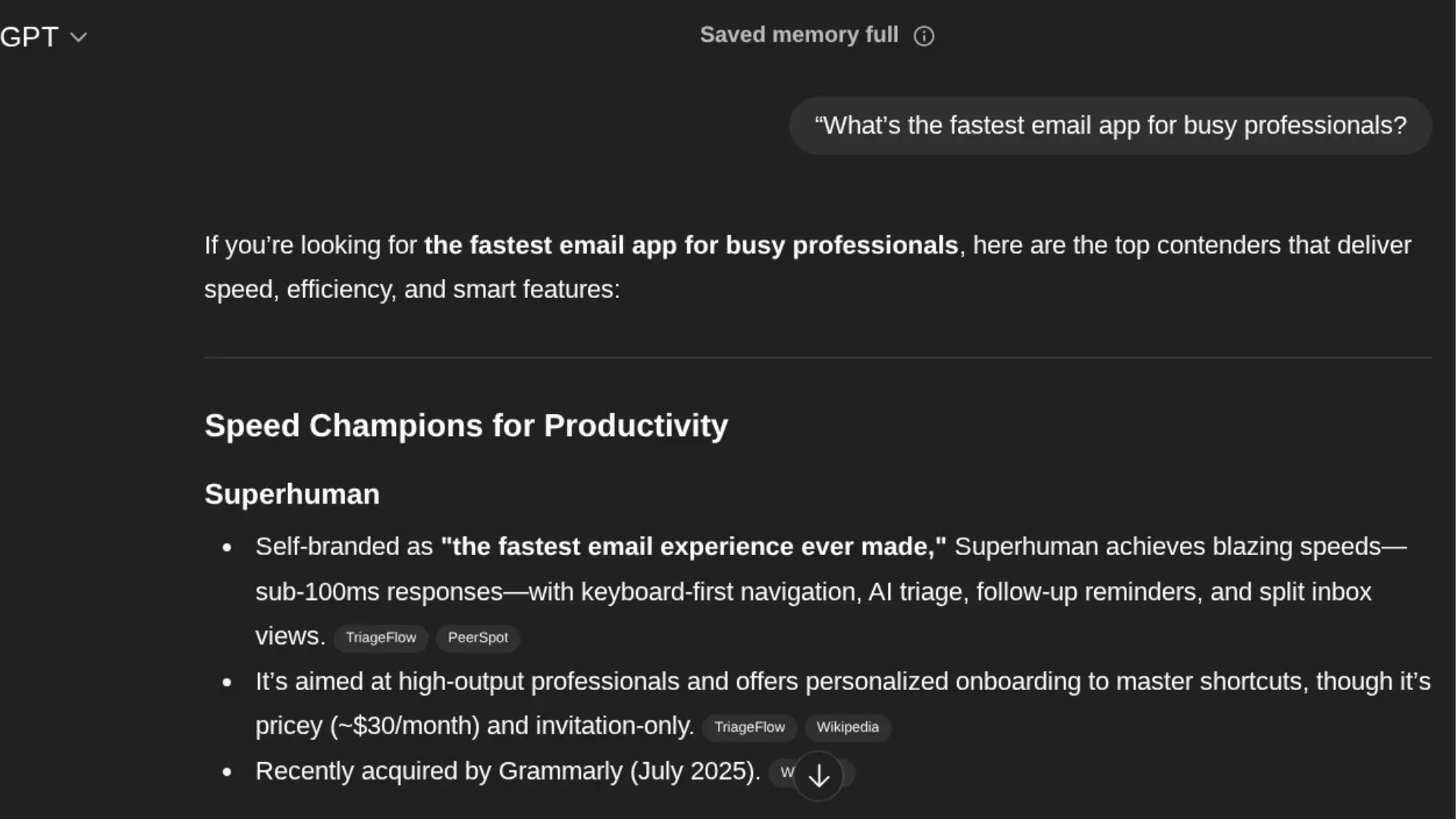
Why Superhuman ranks:
AI-Driven Features That Align with User Intent
Superhuman’s product is built around speed and AI.Features like Instant Reply, AI-powered summaries, smart reminders, and split inboxes aren’t just productivity upgrades; they directly match what users search for when they ask ChatGPT about fast, efficient email tools.
Quantified Results That Users Repeat s
Multiple case studies report users saving 3–4 hours per week, and teams reclaiming 10+ hours per rep through features like keyboard shortcuts and auto-labels. These measurable benefits are often mentioned on platforms like Reddit, helping cement Superhuman’s reputation in AI training data.
Strategic Digital Buzz
Superhuman nailed digital PR early. It earned media coverage in TechCrunch, was heavily discussed in productivity forums, and gained a reputation as the “Ferrari of email.” All of this created consistent citations across Reddit, blogs, and YouTube platforms LLMs like ChatGPT learn from.
Trusted Technical Footprint
Superhuman maintains structured, help-rich blog contentand clear support documentation. It also integrates with platforms like Gmail and offers plugin-level functionality, two key signals ChatGPT uses to recommend real-time tools.
High Trust from Human + Machine Sources s
Superhuman is listed on Wikipedia and referenced in LinkedIn conversations, newsletters, and medium-scale blogs. These structured, evergreen sources further build its trust score with both users and AI models.
Takeaway:
Superhuman didn’t just get lucky it followed a strategy. By aligning its content, product, and visibility with what AI systems prioritise, it became a go-to answer in one of the most competitive SaaS categories: productivity.
Notion: Topical Authority & Structured Content Boost AI Visibility
Prompt examples: “Best tools for managing personal and team productivity?”
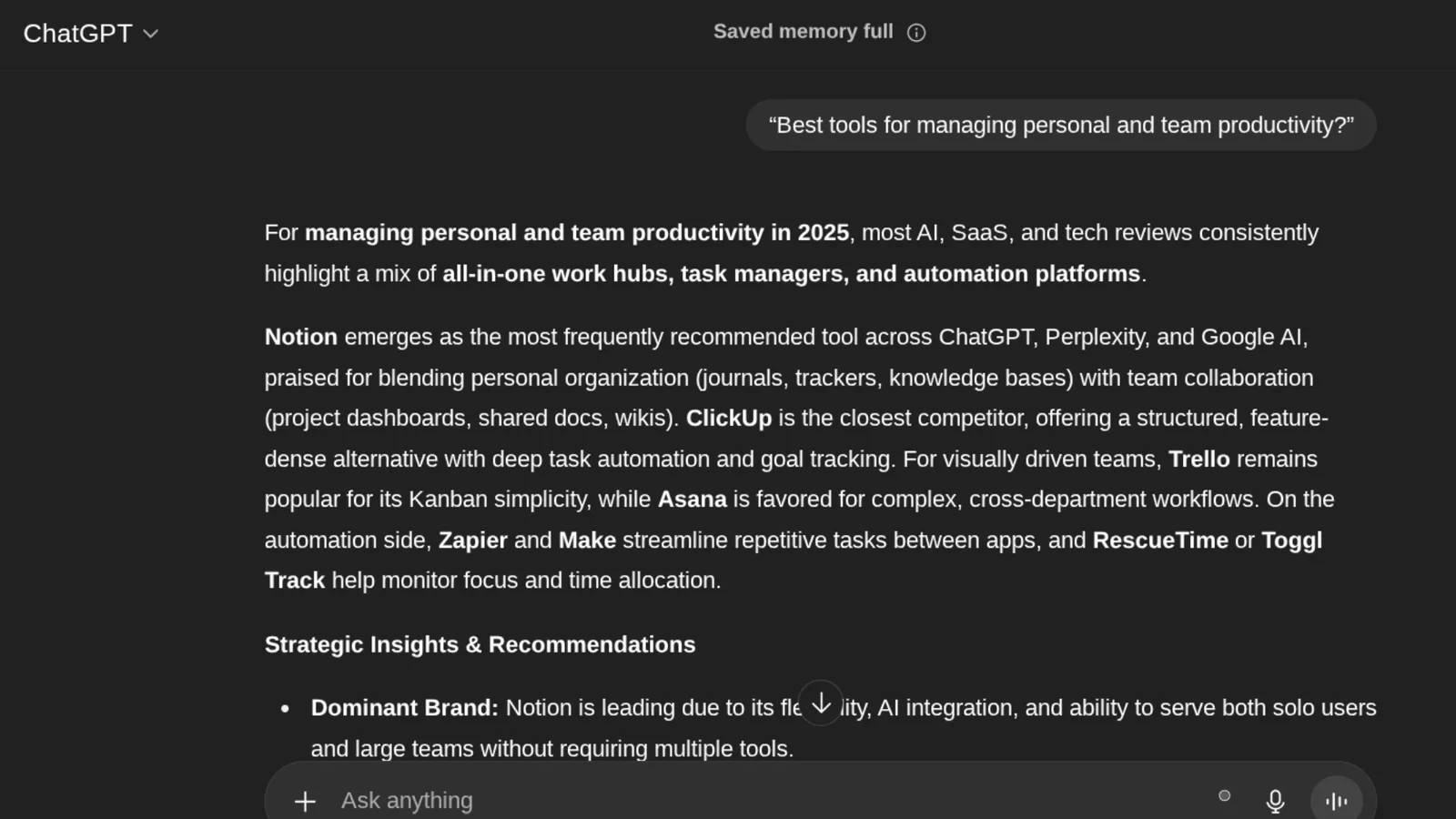
Result: Notion is frequently recommended.
Why Notion ranks:
Public API & Plugins
It enables real-time data access by AI tools like ChatGPT agents and CustomGPTs github.com+1Reddit+1
Featured in AI tool reviews -
widely acknowledged in major reviews of AI productivity stacks BufferTom’s Guide
User-driven visibility
Mentioned often in Reddit and productivity forums alongside ChatGPT workflows Reddit
Ask Yourself:
Has your brand ever been referenced naturally in Reddit debates, Twitter/X forums, or the press? If not, how would a daring product perspective, a founder AMA, or a media outreach campaign start that conversation? AI isn’t limited to surface brands. It reflects what is already being spoken in the world.
How to Know If You're Getting Featured by ChatGPT
OpenAI may not tell you, but there are ways to find out. One of the most frustrating things for brand and content leaders in 2025? You could be getting mentioned by ChatGPT and have no way of knowing.
That’s because OpenAI doesn’t currently offer public analytics or dashboards that show:
- If your brand is appearing in answers
- How frequently it’s cited
- What context or tone is it being framed in
But forward-thinking teams aren’t sitting still. They’re using practical methods and smart tools to track visibility in the new age of AI-powered search.
DIY Method: Manual Prompt Testing (Still Effective)
Before tools like AI Monitor made AI visibility tracking automated and scalable, manual prompt testing was the go-to method, and it’s still a powerful foundational tactic.
It doesn’t just tell you if your brand is being mentioned. It shows you how, where, and in what tone.
Let’s walk through how you can start today, no tools required.
Step-by-Step: Run Your Visibility Test
Here’s how to audit your AI brand presence like a strategist:
- Build a spreadsheet with 10-20 buyer-intent prompts
- Open ChatGPT, Perplexity, or Claude and paste each prompt.
- For each AI response, record:
- Is your brand mentioned?
- What sources are cited? (e.g., Reddit, blog posts, directories)
- How is your brand framed? (positive, neutral, dismissive)
- Are your competitors showing up more, or better positioned?
- Repeat this test weekly to create a visibility scorecard and watch trends over time.
Examples: “Best productivity tools for small teams”, “Top CRMs for solopreneurs”, “Legal tech tools for startups”
Tool: AI Monitor s
At AI Monitor , we believe publishing content is no longer the finish line it’s the starting signal. With generative AI tools reshaping how people discover solutions, the real question we ask ourselves isn’t “Are we ranking?” It’s: Are we even visible to AI?
Here’s what every digital leader should be asking in 2025:
Is Your Brand Being Mentioned in AI Answers?
Though not all sources are cited, AI tools summarise them. You’re losing out on high-intent visibility and influence if your brand isn’t appearing in important prompts. Citations give AI systems authority and increase user confidence.
Are AI Bots Crawling Your Content?
AI bots are not necessarily indexing your material just because you rank well on Google. Many employ various crawl patterns, and you are invisible if your material cannot be understood by AI. Verify: Do you make use of schema? Are AI crawlers being blocked by your robots.txt file?
Is AI Driving Traffic (Without You Knowing It)?
Analytics frequently display “direct” clicks that were influenced by AI. Real attribution and ROI insights are lost if you don’t isolate this traffic. To gauge real impact, astute brands distinguish between organic traffic and AI-generated interest.
6.2.4 The Big Idea
Generative engines are now a core discovery channel, not a trend. Tracking AI citations, bot activity, and AI-influenced clicks is how brands stay competitive in zero-click search.
What You Should Be Tracking (and Why)
Here are the key signals content and marketing teams are now treating like new KPIs:
| Metric | What It Tells You |
|---|---|
Prompts that trigger your brand | Are you appearing when users ask relevant product/service questions? |
Competitor mentions | Is the AI recommending rivals over you, and why? |
Tone & framing | Is your brand being praised, positioned neutrally, or dismissed? |
Cited sources | Which websites or forums are influencing your brand’s visibility? |
Conclusion: ChatGPT SEO Is Already Here-Is Your Brand Ready?
Ranking in ChatGPT isn’t a futuristic idea anymore. It’s happening right now, and brands that understand how large language models work are already pulling ahead.
Unlike traditional SEO, where you fight for blue links and ad space, ChatGPT SEO is about visibility in answers. It’s about showing up when your audience asks, “What’s the best [product] for [goal]?” and AI answers with your brand.
Here’s the bottom line:
- If you’re not being cited in trusted sources, AI won’t notice you.
- If your content isn’t structured, AI can’t understand it.
- If your platform isn’t visible on Reddit, GitHub, Quora, or Wikipedia, AI won’t learn from it.
The brands winning today, like Superhuman, Notion, and Shopify, didn’t wait for AI to find them. They built a presence where AI learns and trains it to trust them over time. You don’t have to guess what works. The strategies are already proven.
You just have to implement them-intentionally, consistently, and early. Because in a world of AI-generated answers, you don’t just want to rank. You want to be the answer.
